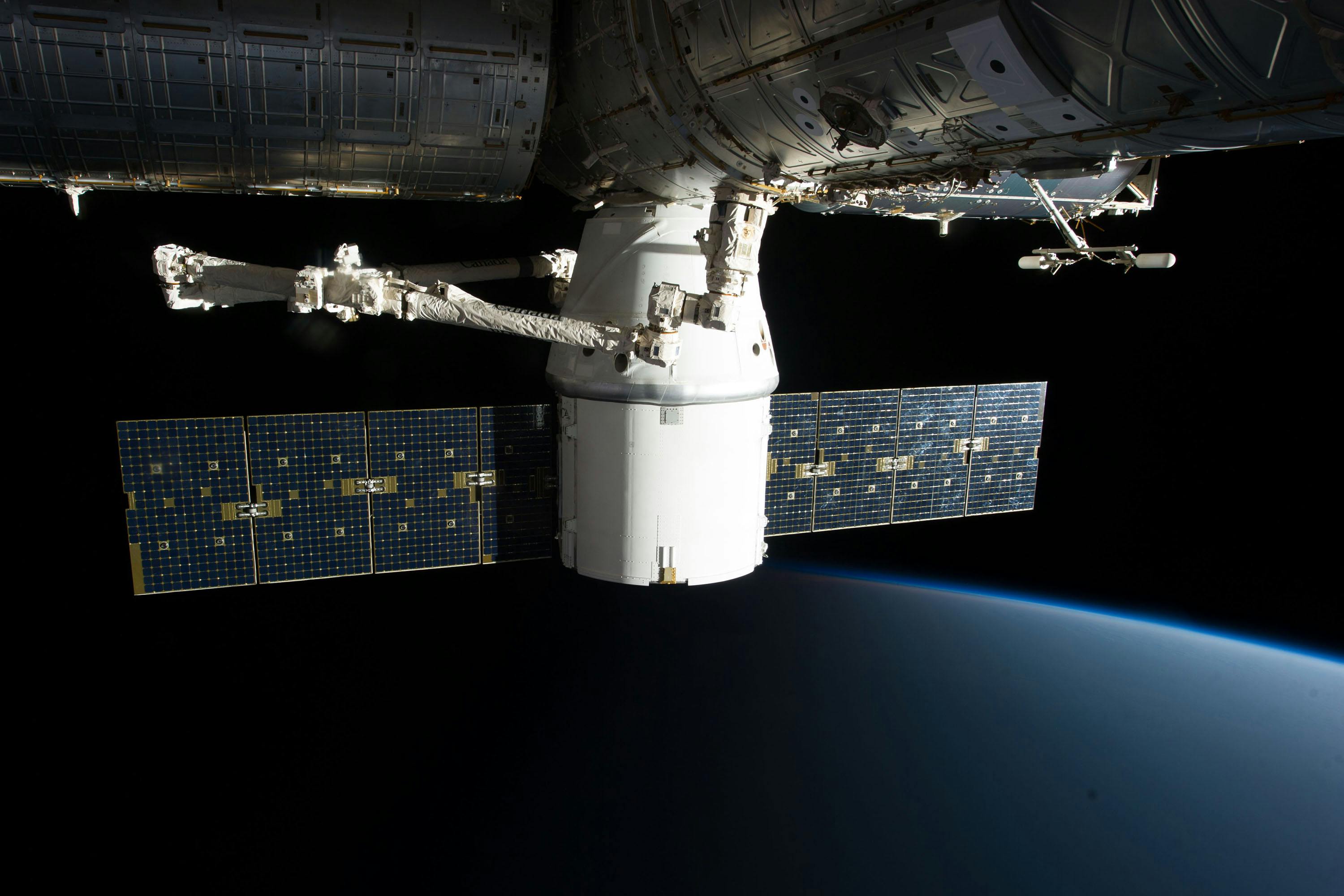🕓 Estimated Reading Time: 5 minutes
Overview
In a demonstration of increasingly efficient space travel, SpaceX Crew-8 successfully delivered four astronauts to the International Space Station (ISS) in a remarkably swift journey. The Dragon spacecraft, carrying NASA astronauts Matthew Dominick, Michael Barratt, and Jeanette Epps, along with Roscosmos cosmonaut Alexander Grebenkin, docked with the orbiting laboratory just 15 hours after its launch from Florida. This expedited transit underscores the advanced capabilities of modern commercial spaceflight and its pivotal role in ongoing space exploration. The mission, originating from Kennedy Space Center's Launch Complex 39A, launched precisely at 10:53 p.m. EST on Sunday, proceeding to a seamless docking at approximately 2:28 a.m. EST on Tuesday, Eastern time, according to NASA.

Background & Context
The rapid journey of the SpaceX Crew-8 mission represents a significant milestone in the history of human spaceflight. For decades, transits to the International Space Station often took considerably longer, sometimes spanning days to allow for precise orbital mechanics and rendezvous procedures. Early Soyuz missions, for instance, could take up to two days to reach the station, involving multiple orbits around Earth to synchronize their approach. The advent of commercial crew capabilities, particularly through SpaceX's Dragon spacecraft, has revolutionized this process.
SpaceX’s Dragon spacecraft and Falcon 9 rocket system have been central to NASA's Commercial Crew Program since its inaugural crewed flight in 2020. This partnership aimed to restore domestic human spaceflight launch capabilities for the United States, reducing reliance on Russian Soyuz rockets. The efficiency demonstrated by Crew-8 is a testament to the continuous refinement of launch profiles, orbital injection accuracy, and autonomous docking systems employed by SpaceX. Such advancements not only reduce transit time but also conserve vital resources, including propellants and life support, while minimizing the time crew members spend in microgravity during transit, which can have immediate physiological effects. This efficiency contributes significantly to the overall viability and frequency of astronaut delivery missions.
Implications & Analysis
The 15-hour transit achieved by the Dragon capsule highlights several key advancements in space travel. Firstly, it showcases the highly precise targeting capabilities of the Falcon 9 launch vehicle, which places the Dragon spacecraft on an optimal trajectory for a rapid rendezvous with the International Space Station. This reduces the need for extensive orbital maneuvers, saving both time and fuel. Secondly, the sophisticated autonomous docking systems on board the Dragon vehicle enable a seamless connection with the ISS, minimizing manual intervention and further streamlining the process.
From an operational standpoint, shorter transit times reduce the overall exposure of astronauts to the space environment before reaching their destination, potentially lessening fatigue and aiding in quicker adaptation to microgravity conditions upon arrival at the station. This efficiency also frees up more time for scientific research and maintenance activities aboard the ISS, maximizing the utility of the station's crew time. Furthermore, it reinforces the reliability and robustness of commercial space transportation systems, which are becoming increasingly crucial for sustained human presence in low-Earth orbit and future deep-space missions. The consistent performance of these systems builds confidence among international partners and paves the way for more ambitious ventures.

Reactions & Statements
The successful and swift docking of the SpaceX Crew-8 mission was met with expressions of relief and congratulations from both ground control and the orbiting crew. As the Dragon capsule approached the International Space Station, live feeds showed the intricate ballet of precision engineering unfolding, with cheers heard from mission control centers.
Following the successful docking, NASA officials and SpaceX representatives commended the teams involved for their meticulous planning and execution. While specific direct quotes were not immediately available from the initial reports, the tone from both agencies typically emphasizes safety, precision, and the collective effort behind such complex operations. The arrival of the new ISS astronauts was warmly welcomed by the seven Expedition 70 crew members already on board the station. The hatch opening and subsequent greetings are always a moment of global interest, symbolizing international collaboration in space. This rapid transfer capability further solidifies the station's role as a continuously crewed orbital laboratory, maintained and operated by a rotating complement of space travelers.
'The successful docking of Crew-8 demonstrates the enduring partnership between NASA and commercial industry, pushing the boundaries of what's possible in space exploration,' a NASA statement typically reads following such a milestone event.
What Comes Next
With the arrival of the four ISS astronauts, the total number of crew members aboard the International Space Station temporarily increased, before some members of the Expedition 70 crew begin their departure process. The newly arrived crew members will embark on an approximate six-month mission, during which they will conduct a wide array of scientific research and technology demonstrations. Their work will span various fields, including human health in microgravity, advanced materials science, Earth observation, and the development of new technologies critical for future deep-space missions to the Moon and Mars.
The increased crew complement allows for more hands-on research and maintenance, maximizing the scientific output of the orbiting laboratory. This mission will contribute invaluable data and experience to global space agencies, helping to prepare for longer-duration missions beyond low-Earth orbit. The seamless astronaut delivery capability established by SpaceX is crucial for maintaining a continuous human presence in space, ensuring that the station remains fully staffed and operational for its myriad research objectives. As space agencies look towards lunar gateways and eventual Martian expeditions, the lessons learned from these efficient ISS resupply and crew rotation missions will prove indispensable.
Conclusion
The rapid 15-hour journey of the SpaceX Crew-8 mission to the International Space Station is more than just a logistical success; it signifies a maturing phase in commercial human spaceflight. This expedited astronaut delivery capability enhances operational efficiency, reduces transit stresses for crews, and underscores the reliability of current space transportation systems. As humanity continues its push into the cosmos, relying on robust partnerships between government agencies and private enterprises like SpaceX, such achievements lay the groundwork for more ambitious endeavors, ensuring a sustainable and dynamic future for space exploration. The swift journey of Crew-8 is a testament to the continuous innovation driving our reach for the stars.
Comments
Post a Comment